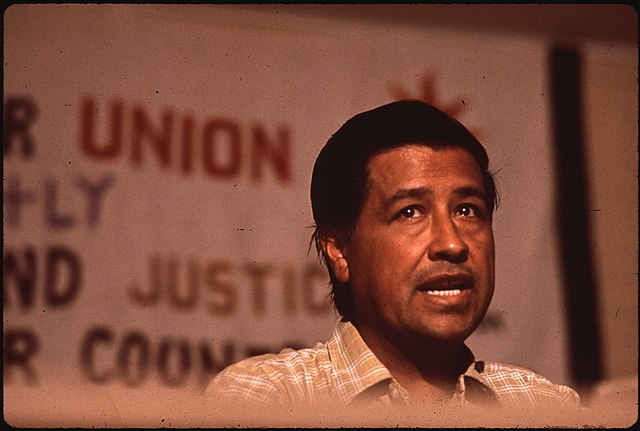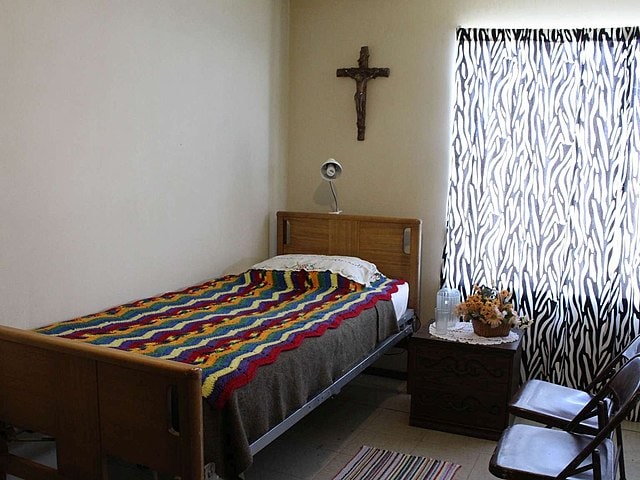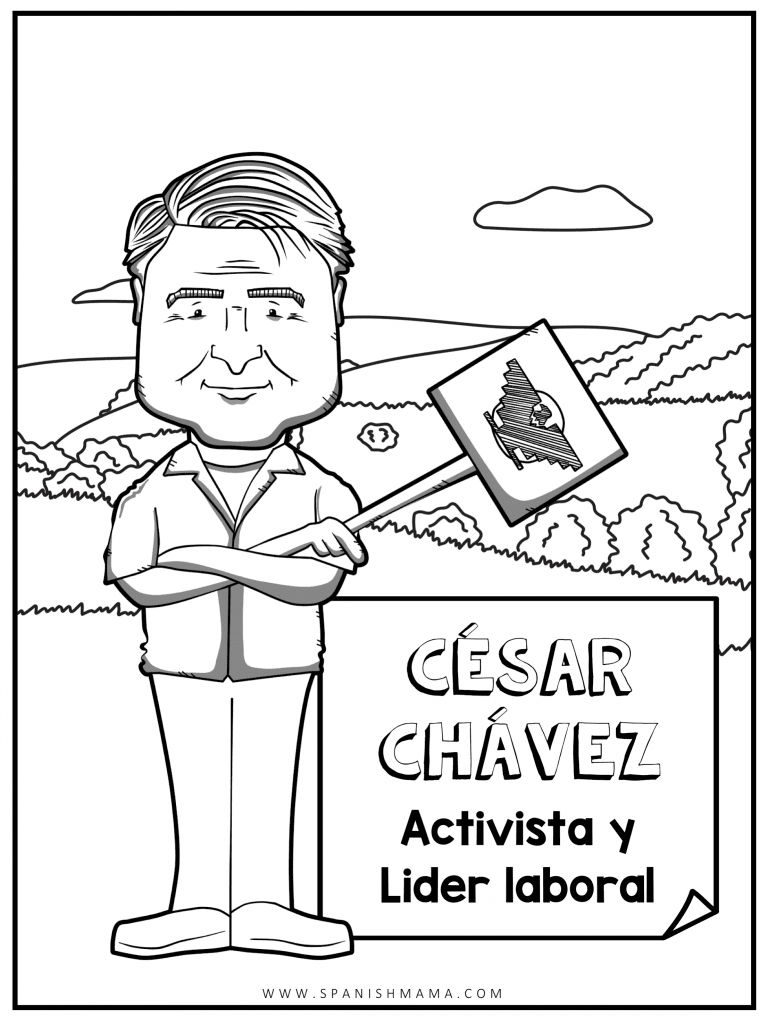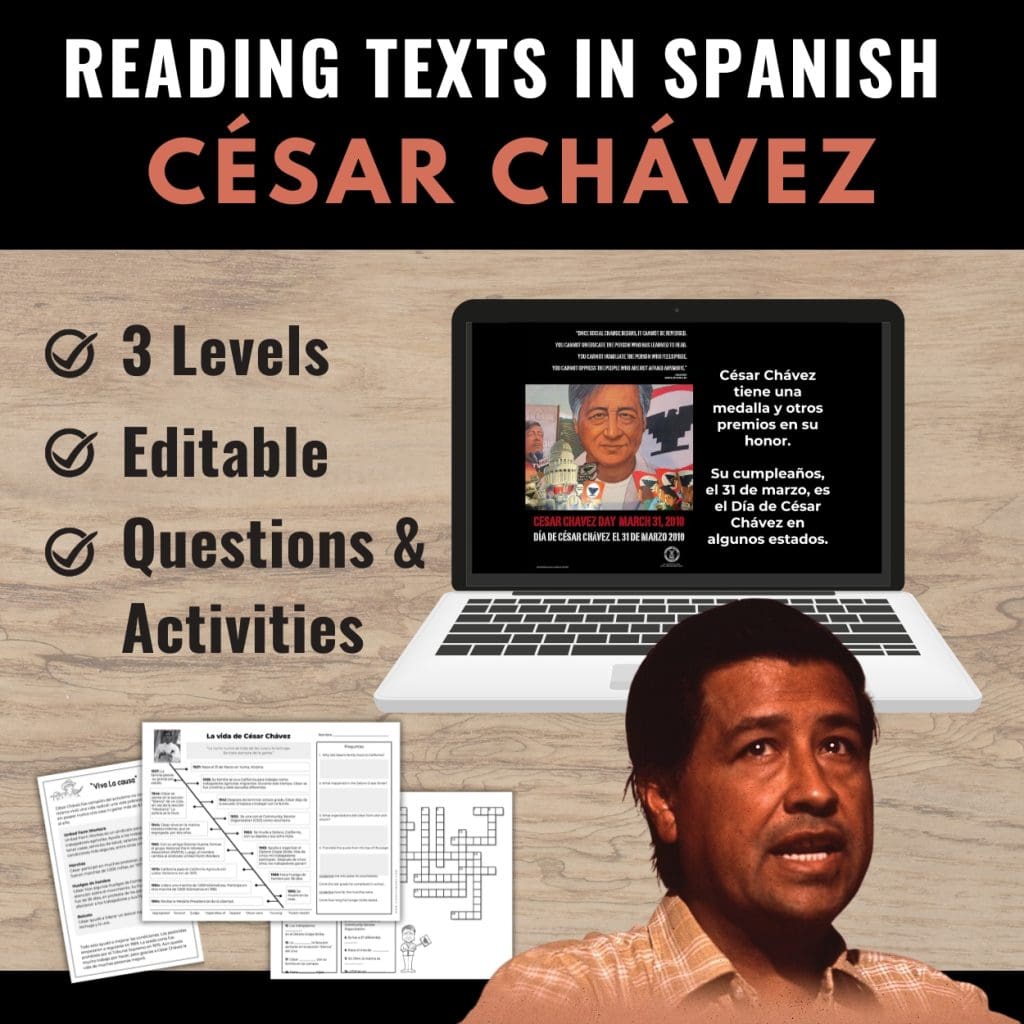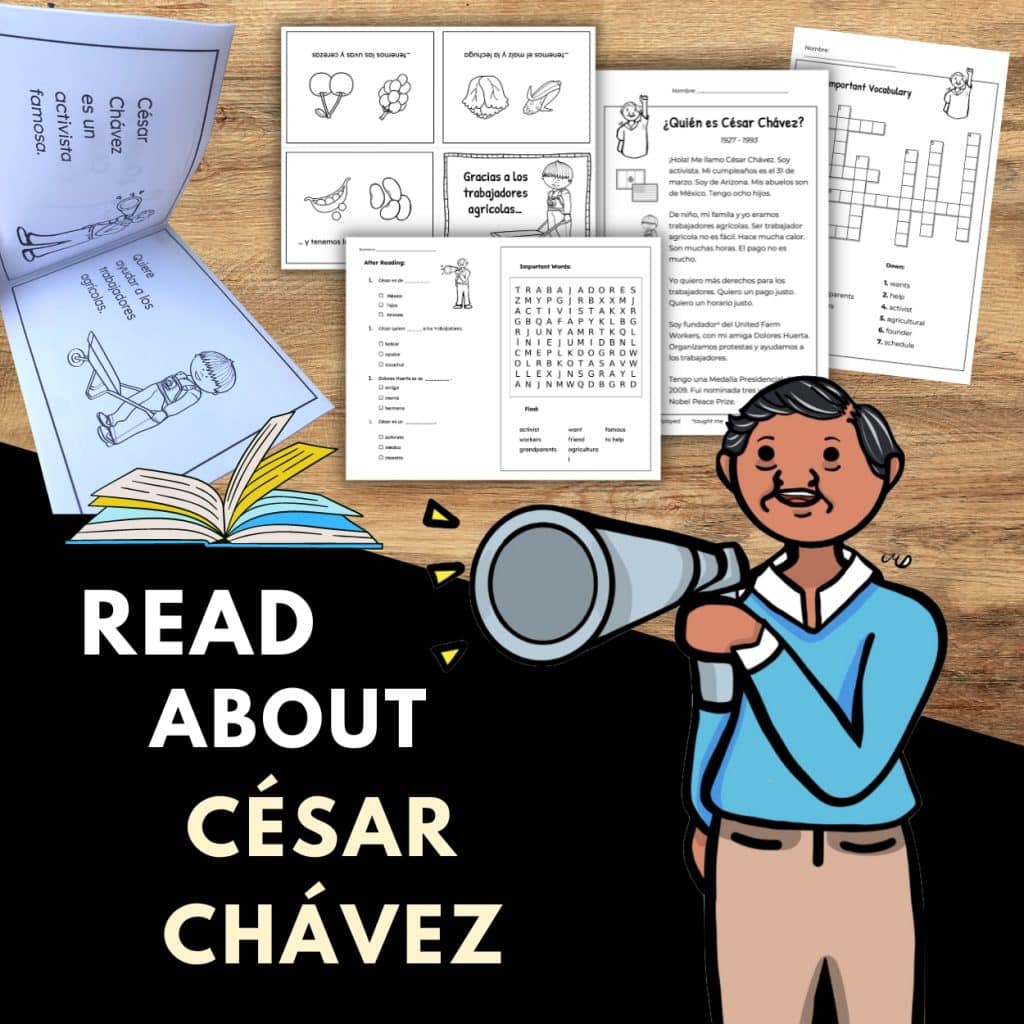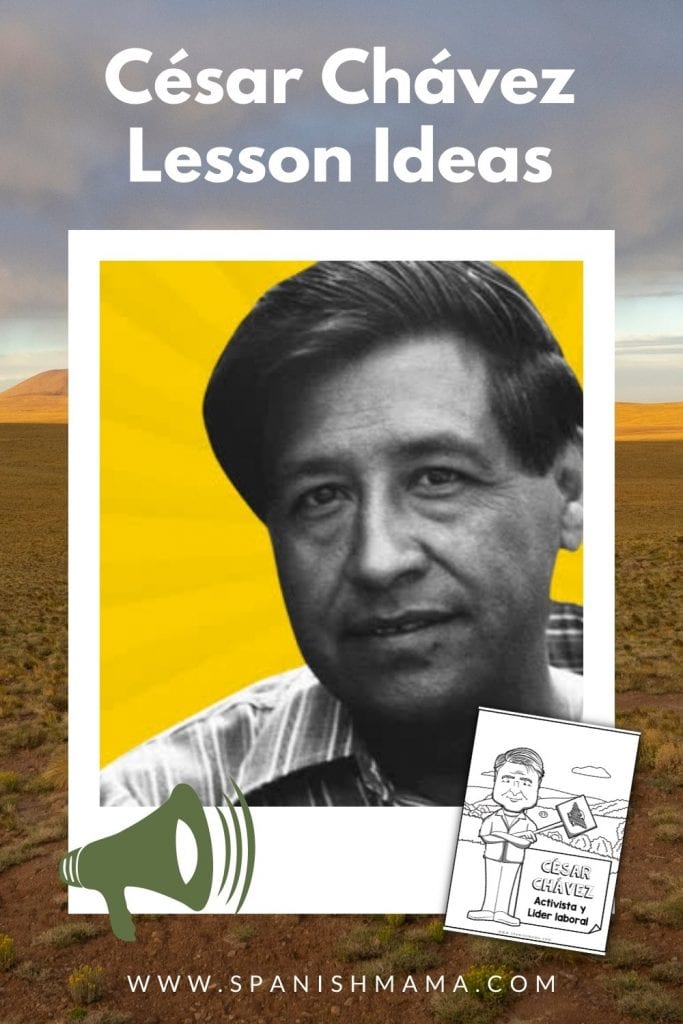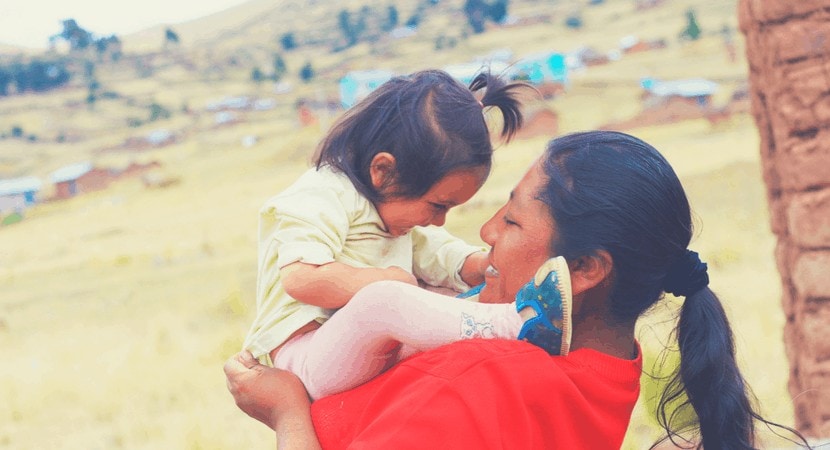César Chávez For Kids: Biography and lesson Plans
Inside: Learn about the life and legacy of César Chávez, with these biography resources and lesson plans, for kids.
Every student should know about César Chávez. He’s the perfect bridge for students to understand the how we get the food on our tables, and how people can organize when systems are unfair.
As a young teen working in California fields, having dropped out of school by eighth grade, Chávez had a unique understanding of what farm workers face. He dedicated most of his life fighting for the rights and welfare of farm workers.
“The fight is never about grapes or lettuce. It is always about people.”
– César Chávez
Here’s how this post is organized:
1. César Chávez Biography for Kids – Jump to section
2. Links and Printables to Learn More – Jump to section
3. Books About César Chávez for kids – Jump to section
4. YouTube Videos for Kids – Jump to section
5. Quotes for Kids – Jump to section
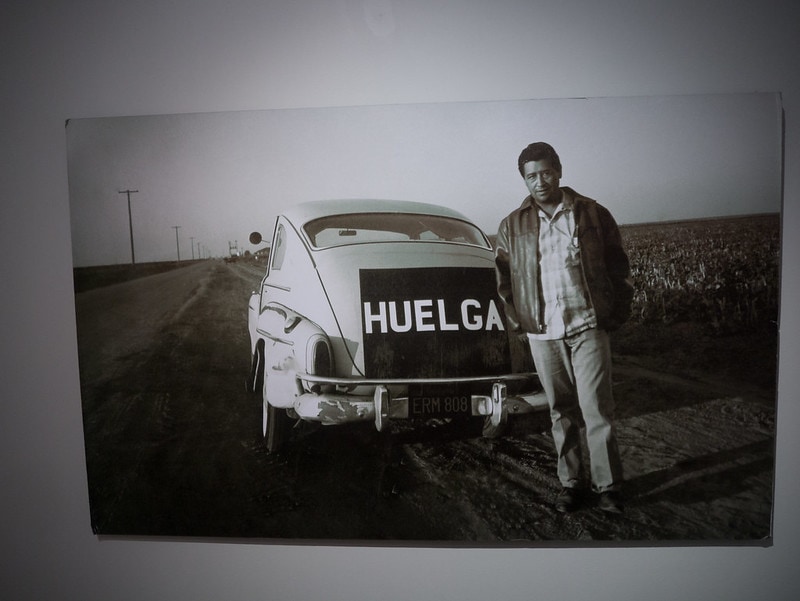
Related: Famous Latinos & Hispanic Americans Home Page
Fast Facts about César Chávez
Birth: March 31, 1927
Birthplace: Yuma, Arizona
Death: April 23, 1993
Family: Helen Fabela (spouse), 8 children
Education: Completed 8th Grade
Career Highlights: Co-founder of United Farm Workers
Famous For: Activism, 1994 Presidential Medal of Freedom
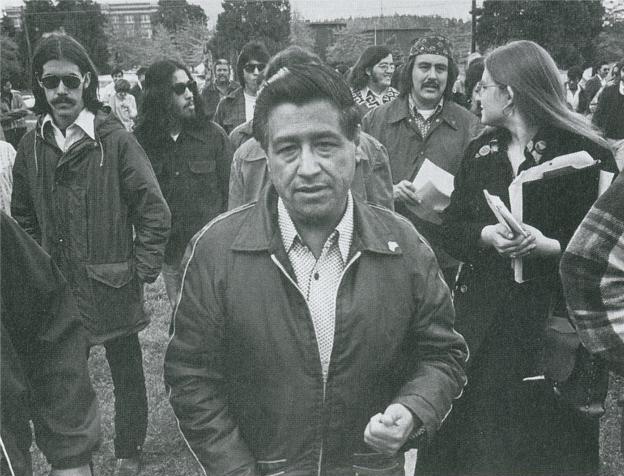
Easy César Chávez Biography for Kids
Here is a simple outline of César Chávez’s life you could use with kids:
César Chávez was a famous activist for farm workers and champion of non-violence. He was born March 31, 1927, in Arizona, to Librado Chávez and Juana Estrada His grandparents were from Mexico.
When César was 11, his family lost their farm and had to become migrant farm workers. Cesar went to over 30 different schools and dropped out after eighth grade.
César learned firsthand the difficulty farm workers face: low pay, dangerous pesticides, long hours, unsafe conditions.
62, with eight children, he left his job to fight for farm workers. Together with Dolores Huerta, he founded United Farm Workers. He organized marches, protests, and boycotts as well.
César was nominated three times for the Nobel Peace Prize. He was given the Presidential Medal of Freedom in 1994, one year after his death.
Awards:
– Presidential Medal of Freedom
– Nominated 3 times for Nobel Peace Prize
– 2003 Commemorative Stamp
César Chávez’s Activism, for Kids
If you would like to to take a bit of a deeper dive into Cesár activism, here is a brief explanation of the methods he used to help bring attention to workers and improve their conditions.
César Chávez championed non-violent activism. He voluntarily lived in poverty himself, never owning a home or making more than $6,000 a year. He began with the Community Service Organization in 1952 as a volunteer.
United Farm Workers
Ten years later, he moved to Delano, California and found the National Farm Worker’s Association. This later become the United Farm Worker’s Union. They helped workers get homes, healthcare, more secure pay, and safer conditions, among other things.
Marches
César was involved in many different protests. Two of them were 1,000 mile marches, in 1975 and 1992.
Boycotts
César helped lead a boycott against lettuce and grapes, leading to a change in California’s laws in 1975.
All of these efforts led to changes in protections for farm workers. Pesticides began to be regulated in 1969. The short-handled hoe was banned by the supreme court in 1975. There is still a lot of work to do for, but thanks to César Chávez many people’s lives became better.
Interesting Facts about César Chávez for Kids
Not only were Mexican American, Filipino, and other mirgant workers exploited in their jobs, they also suffered discrimination in their communities.
Though the story of Rosa Parks is very famous, most people are not aware that César Chávez was arrested and jailed 10 years before, for sitting in a section of a movie theaters prohibited to Latinos and African Americans.
Though Chávez endured many things from a young age, he said this: “We draw our strength from the very despair in which we have been forced to live. We shall endure.“
Full César Chávez Biography for Older Students
Here is a more complete biography for older students:
César Chávez was born March 31, 1927 in Yuma, Arizona. During the Great Depression, his family lost their farm and moved to California in search of farm labor.
As his family moved constantly around in search of work, César attended over 30 different schools. Chávez had to drop out of school after eighth grade, to work in the fields with his family. Although he did not enjoy school and endured some mistreatment from speaking Spanish, he pursued self-education and read extensively the rest of his life.
Working in the fields, César knew firstand just how difficult the working conditions for migrant workers were, for both children and adults. Low wages, dangerous conditions, and unregulated hours were just some of the problems farmworkers faced.

César joined the United States Navy in 1946, serving for two years in the Western Pacific. He married Helen Fabela in 1948 and they lived in the East San Jose (their neighborhood was called Sal Si Puedes – Get Out if You Can). The couple went on to have eight children.
César Chávez joined the Community Service Organization (CSO) in 1952, eventually rising to become the national director. The CSO worked to fight discrimination and organized community voter registration.
In 1962, César left his regular job to devote himself completely to a life of activism. The Chávez family of 10 moved to Delano, California and Chávez founded the National Farm Worker’s Association (NFWA) with Dolores Huerta.
The NWFA later combined with the Agricultural Worker’s Committe (AWOC), to became United Farm Workers of America.
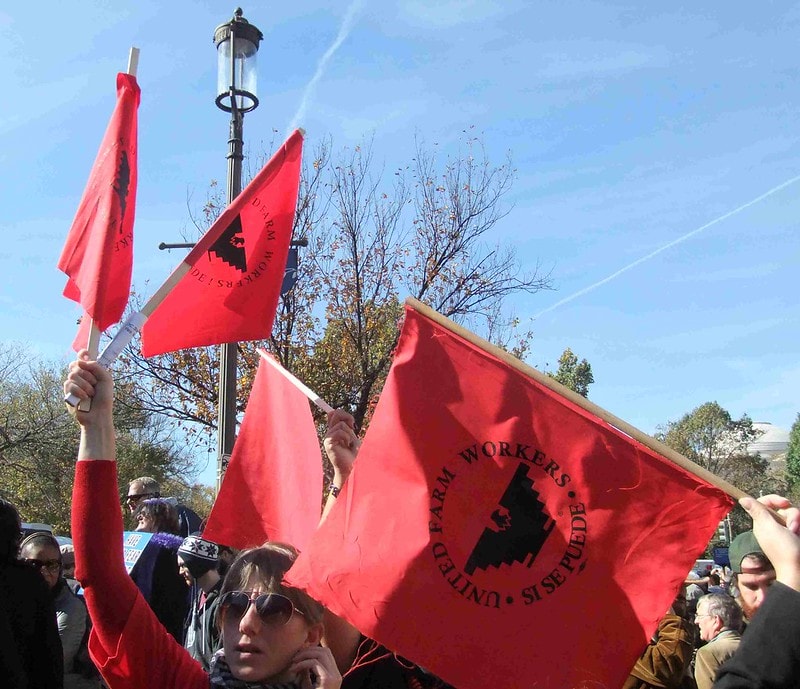
The UFW flag, featuring a black eagle and the phrase “Sí se puede.”
Chavez’s Activism
“We do not need to kill or destroy to win. We are a movement that builds and not destroys.”
Chávez is known for his fierce committment to nonviolent protest as part of the La Cause (the cause). This included several hunger strikes. His longest strike lasted 36 days, and was in response to his group’s restlessness with the slow progress of the nonviolent approach.
Many people recognize the UFW’s motto “Sí se puede!,” first coined by Dolores Huerta. “Viva la Causa!” was another slogan,
One of the most famous boycotts that Chávez helped to organize was the Delano Grape Strike in 1962. The fight lasted many years, but eventually they were able to demand some improvement in conditions from grape growers. Here’s a brief outline of how it happened:
- 1965: Workers go on strike
- 1966: César leads 340 mile march from Delano to Sacramento
- 1966: National boycott of grapes begins
- 1970: Dolores Huerta helps negotiate between the growers and union.
From the Cesar Chavez Foundation, the site describes the myriad of ways the farm worker movement helped communities:
“Cesar began a burial program, the first credit union for farm workers, health clinics, daycare centers and job-training programs. With the help of the movement, Cesar built affordable housing – starting with a retirement home for the elderly and displaced Filipino American farm workers and later, multi-family and homeownership communities for farm workers and other low-income working families and seniors. He established two educational-style Spanish-language farm worker radio stations, the beginning of what is now the 13-station Radio Campesina network. He also established the Fred Ross Education Institute which trained negotiators, contract administrators and union organizers.”
One of the greatest achievement of the UFW was the California Agricultural Labor Relations Act of 1975. Today is remains the only law guaranteeing agricultural workers the right to organize.
The hunger strikes, in fact may have been one cause of his early death at 66 years old. César Chávez died in San Luis, Arizona, on April 23, 1993.
More than 50,000 mourners gathered at his funeral services. In the years since, numerous parks, schools, streets, and public buildings have been named in his honor.
President Barack Obama declared Chávez´s birthday (March 31) a federal commemorative holiday. In 2014, the biographical movie César Chávez was released.
Printables and links to learn more
I found a ton of free César Chávez biography resources out there, though lots of pages had old or broken links. I sorted through them and found my favorites that are current and working. Here they are!
First, the California Department of Education has very extensive lesson plans available for every grade, K-12th. It takes a little while to sort through, but if you are looking for in-depth plans you can look there.
Also, if you have a BrainPop account, they have an excellent video with supplemental digital activities.
Resources for younger kids:
- Free César Chávez coloring page.
- Enchanted Learning has vocabulary activities, word searches, readings, and more (English).
- All About César Chávez printable PDF. for elementary (English). Here is another really nice one-page option.
- Bilingual descriptive writing sheet.
- Elementary – Middle School full lesson plan from PBS.
- César Chávez printable vocabulary flipbook.
- Partner Play Free Download (a dramatic script with vocabulary support).
- César Chávez timeline cut and paste activity.
Resources for older students:
- One-page César Chávez biography passage in Spanish for middle to high school (there are some missing accents, so check before sharing with students).
- Biography Literacy Lesson in English.
I also have these units available for learning more:
Books FOR kids to adults
These links are affiliate links.
- Here is a Teacher’s Guide PDF from Yuyi Morales for the book Harvesting Hope.
- Here is a big pack of free printables to go with Harvesting Hope from Arizona University.
Videos About César Chávez
Short biography in English (3min 59s):
This video is a really nice presentation on César Chávez’s work and significance today, in a newscast format.
(5min)
A short César Chávez biography in English, designed for kids (3min 26s):
A very quick César Chávez biogafia in Spanish, designed for kids (50s):
Basic bio in Spanish (2min. 31s):
10 Famous César Chávez Quotes
These quotes from César Chávez give us a glimpse into his beliefs and vision for a just society.
1. “Preservation of one’s own culture does not require contempt or disrespect for other cultures.”
– César Chávez
2. “True wealth is not measured in money or status or power. It is measured in the legacy we leave behind for those we love and those we inspire.”
– César Chávez
3. “We need to help students and parents cherish and preserve the ethnic and cultural diversity that nourishes and strengthens this community – and this nation.”
– César Chávez
4. “I am convinced that the truest act of courage, the strongest act of manliness is to sacrifice ourselves for others in a totally non-violent struggle for justice.”
– César Chávez
5. “Once social change begins, it cannot be reversed. You cannot un-educate the person who has learned to read. You cannot humiliate the person who feels pride. You cannot oppress the people who are not afraid anymore.”
– César Chávez
6. “Students must have initiative; they should not be mere imitators. They must learn to think and act for themselves – and be free.”
– César Chávez
7. “History will judge societies and governments – and their institutions – not by how big they are or how well they serve the rich and the powerful, but by how effectively they respond to the needs of the poor and the helpless.”
– César Chávez
8. “The fight is never about grapes or lettuce. It is always about people.”
– César Chávez
9. “The end of all education should surely be service to others.”
– César Chávez
10. “Talk is cheap…It is the way we organize and use our lives everyday that tells what we believe in.”
– César Chávez
I hope these ideas and resources were helpful to you! If you have more ideas for resources or lessons, let me know in the comments below!
Image Credits:
“Huelga ’Strike’ César Chávez” (CC BY 2.0) by jay galvin
“National Hispanic Heritage Month – Cé” (CC BY 2.0) by US Department of State
